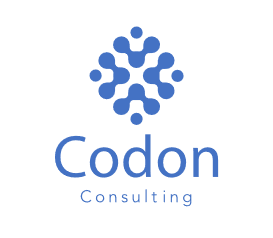CASE STUDIES
Case Study 1: Svegro – Optimizing Ecological Crop Growth
ABOUT SVEGRO
Svegro is Sweden’s largest producer of ecological herbs and lettuces, located at the Färingsö island just outside Stockholm city. The company cultivates some 20 different crops on 55,000 square meters of green house area with millions of pots harvested each year. These are sold to supermarkets, grocery stores and restaurants all over the country. Although Svegro are justifiably proud of their low wastage, they still want to drive those down even further, while also minimizing energy costs
Project Goals:
To train an AI system to estimate crop height from surveillance image data.
To build a prognostic model that can estimate final crop height based on measurements and
climate one week before time of harvest, or earlier.
To introduce a system for continuous crop health monitoring and anomaly detection to flag
abnormal growth and plant discoloration.
AI-Powered Solutions:
The first challenge was to integrate the data from Svegro’s different sources:
The climate control system, manually measured quality data, soil electric conductivity values and more. After establishing a process for continuous data updates, we moved on to evaluating possible AI solutions to estimate a plant’s height based image data from standard surveillance cameras. In order to train a machine learning model to accomplish this task, we needed to label thousands of images as training data for the model. The final solution was a deep learning model which was able to estimate the height of a plant from an image with a mean error of less than half a centimeter, even in varying lighting conditions and in different growth stages. In addition, we trained a separate object detection model that is able to detect the plants and register their age from time of seeding.
AI-Powered Solutions:
The first challenge was to integrate the data from Svegro’s different sources:
The climate control system, manually measured quality data, soil electric conductivity values and more. After establishing a process for continuous data updates, we moved on to evaluating possible AI solutions to estimate a plant’s height based image data from standard surveillance cameras. In order to train a machine learning model to accomplish this task, we needed to label thousands of images as training data for the model. The final solution was a deep learning model which was able to estimate the height of a plant from an image with a mean error of less than half a centimeter, even in varying lighting conditions and in different growth stages. In addition, we trained a separate object detection model that is able to detect the plants and register their age from time of seeding.
Dashboard for Real-Time Monitoring:
With the help of these AI models, we built a dashboard where Svegro can continuously monitor the state of their cultivation and get answers to questions such as:
How tall are the plants under each camera?
How old are they?
What size plants can we expect at harvest?
Are there any quality associated anomalies?
Suggestions on changes to greenhouse temperature in order to optimize harvest crop size.
Historical Data Analysis:
Apart from the real-time dashboard, we also built a historical data analysis dashboard for retrospective analysis of the relationship between basil growth and indoor and outdoor climate.
Svegro’s employees frequently discuss specific batches or “seeding dates” that were especially
successful or unsuccessful and try to figure out how they differed, and now they can continue
doing that with the added backing of data. The dashboard allows export of climate data from
arbitrary historical periods for comparison.
Case Study 2: Här ligger jag – Moderating Social Media Content
Background:
Open social media messaging & posting app. Need to moderate messages before they are posted, and to understand and analyze posted topics.
Data:
Streaming short text messages (approx. 160 characters). Training data manually labeled into 24 categories.
Value Delivered:
Classification of messages into 24 content categories. E.g. pass / ok, nonsense, hateful, plus multiple topic categories.
Recognition and removal of personal information.
Direct ability to map, visualize and analyze published content based on message text.
Case Study 3: Consultancy Broker – CV Classification System
Background:
The client, a consultancy broker with a large and growing pool of consultants, reached out to usto help them explore if AI could help to offload their staff and facilitate “sorting CVs into different piles”, as it were.
Since the client expected to grow quickly, they would have a hard time reading all the CVs manually, as they did now. We decided in collaboration with the client to create aclassification system to make a rough sorting of CVs into different categories, after which manual processing would be applied.
Solution:
We built a classification model on top of a large language model (Swedish BERT) with some extra features added.
The model was trained on a couple of thousand CVs (in English and Swedish) with manually assigned “ground truth” roles from a set of about 60 possible roles. We also built a “Twin CV” function. Imagine that you have the perfect candidate for an assignment, but this candidate is already taken. Then you can use the Twin CV – a semantic similarity search based on CV embeddings – to find a similar profile for the role. Both functions were integrated into the client’s CRM system.
Outcome:
Initial evaluations were looking so-so, because we had failed to correctly specify the problem.
After talking to the client end users, we realized that the model should be a multi-label classification model that should suggest several possible roles for each candidate, rather than a winner-takes-all multi class model. With several suggested roles, it was easier for the end user to get an overall picture of a CV. The end users also reported that the solution had helped them clean their “ground truth” data. In some cases, the roles suggested by the model were found to be more appropriate than the manually assigned roles, and the ground truth was updated.
Contact
Let’s Get in Touch
Ready to take the next step on your AI journey?
Reach out to us today.
Codon Consulting
We will implement the most appropriate solution for you whether it be a state-of-the-art deep learning method or a simple, traditional technique that does the job.
CONTACT
Codon Consulting AB
Tel: Erik Fredlund
+46 70 939 5652
Email: info@codon.se
Address:
Medborgarplatsen 3
Fastighetsbox 141
118 26 Stockholm
Org: 559210-3666
Visiting Address:
Medborgarplatsen 3
Söderhallarna, Floor 8
Embassy House

